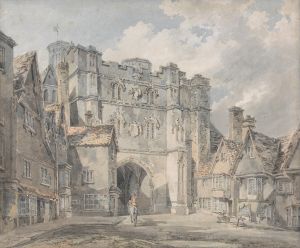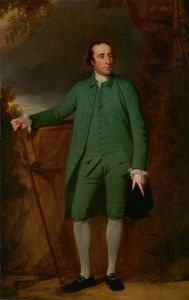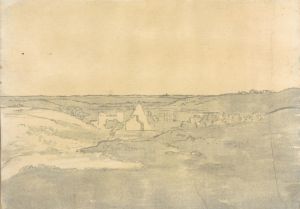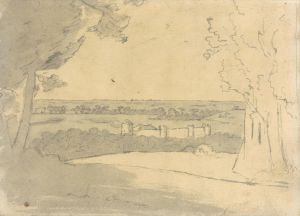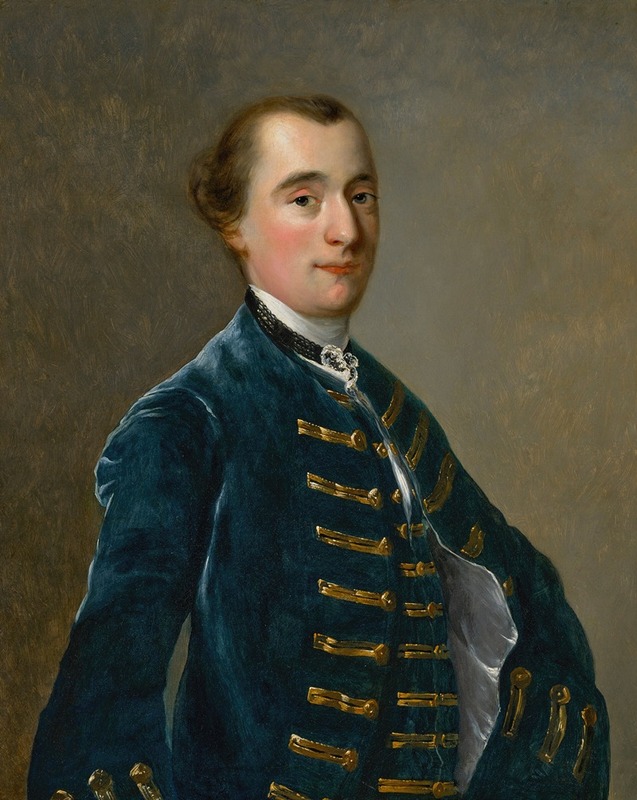
Portrait of Sampson Copestake of Kirk Langley
A hand-painted replica of Joseph Wright of Derby’s masterpiece Portrait of Sampson Copestake of Kirk Langley, meticulously crafted by professional artists to capture the true essence of the original. Each piece is created with museum-quality canvas and rare mineral pigments, carefully painted by experienced artists with delicate brushstrokes and rich, layered colors to perfectly recreate the texture of the original artwork. Unlike machine-printed reproductions, this hand-painted version brings the painting to life, infused with the artist’s emotions and skill in every stroke. Whether for personal collection or home decoration, it instantly elevates the artistic atmosphere of any space.
Joseph Wright of Derby, an eminent English painter of the 18th century, is renowned for his distinctive use of chiaroscuro and his ability to capture the spirit of the Enlightenment. Among his many works is the portrait titled "Portrait of Sampson Copestake of Kirk Langley." This painting exemplifies Wright's skill in portraiture, showcasing his ability to convey the character and status of his subjects through meticulous attention to detail and composition.
Sampson Copestake, the subject of the portrait, was a resident of Kirk Langley, a village in Derbyshire, England. While specific details about Copestake's life and achievements are limited, his commissioning of a portrait by Joseph Wright suggests that he was a person of some standing and means within his community. During the 18th century, having one's portrait painted was often a privilege reserved for the affluent or those of notable social status, indicating that Copestake likely held a position of respect or influence.
Joseph Wright of Derby, born in 1734, was a central figure in the art world of his time, particularly known for his association with the Industrial Revolution and the Enlightenment. His works often depicted scientific subjects, industrial scenes, and portraits of prominent figures. Wright's ability to blend the dramatic use of light and shadow with a keen eye for realism made his portraits particularly striking. In "Portrait of Sampson Copestake of Kirk Langley," Wright employs these techniques to create a lifelike and engaging representation of his subject.
The portrait itself is characterized by Wright's typical use of chiaroscuro, where the interplay of light and shadow adds depth and dimension to the subject. This technique not only highlights the physical features of Copestake but also imbues the painting with a sense of drama and intensity. Wright's attention to detail is evident in the rendering of textures, such as the fabric of Copestake's clothing and the subtle nuances of his facial expression, which together convey a sense of the sitter's personality and status.
Wright's portraits often went beyond mere physical likeness, aiming to capture the essence of the individual. In the case of Sampson Copestake, the painting likely reflects both his personal attributes and his social standing. The background and setting of the portrait, while not extensively documented, would have been chosen to complement and enhance the portrayal of Copestake, aligning with the conventions of portraiture during that period.
The "Portrait of Sampson Copestake of Kirk Langley" is a testament to Joseph Wright's mastery as a portrait artist and his ability to encapsulate the spirit of his time. While the painting itself is a significant work, it also serves as a historical document, offering insights into the social and cultural milieu of 18th-century England. Through this portrait, Wright not only immortalizes an individual but also provides a window into the world in which both artist and subject lived.
In summary, Joseph Wright of Derby's "Portrait of Sampson Copestake of Kirk Langley" is a notable example of 18th-century portraiture, reflecting the artist's skill and the social context of the era. Although specific details about Sampson Copestake remain scarce, the painting stands as a representation of Wright's artistic legacy and the enduring appeal of his work.








